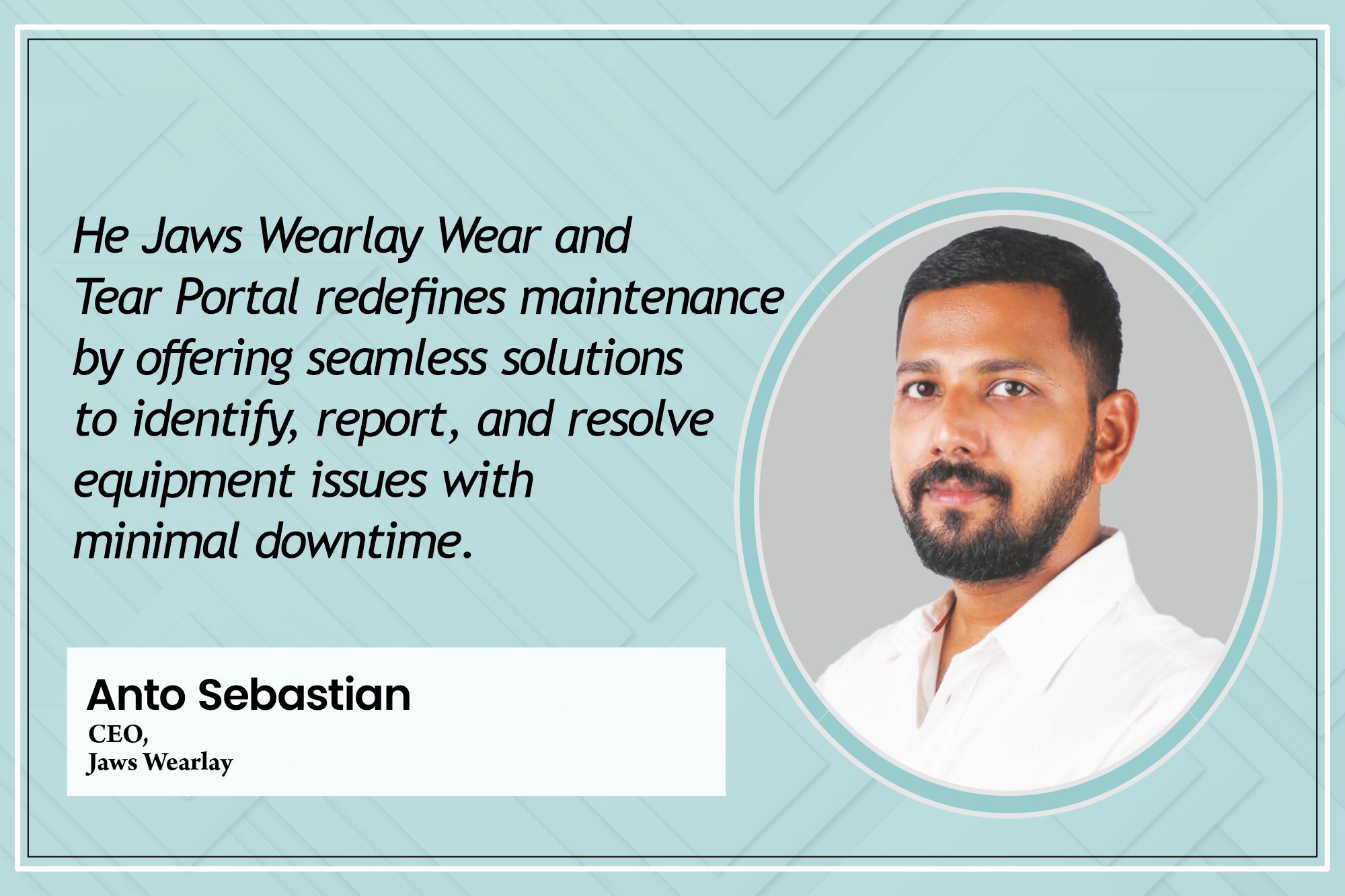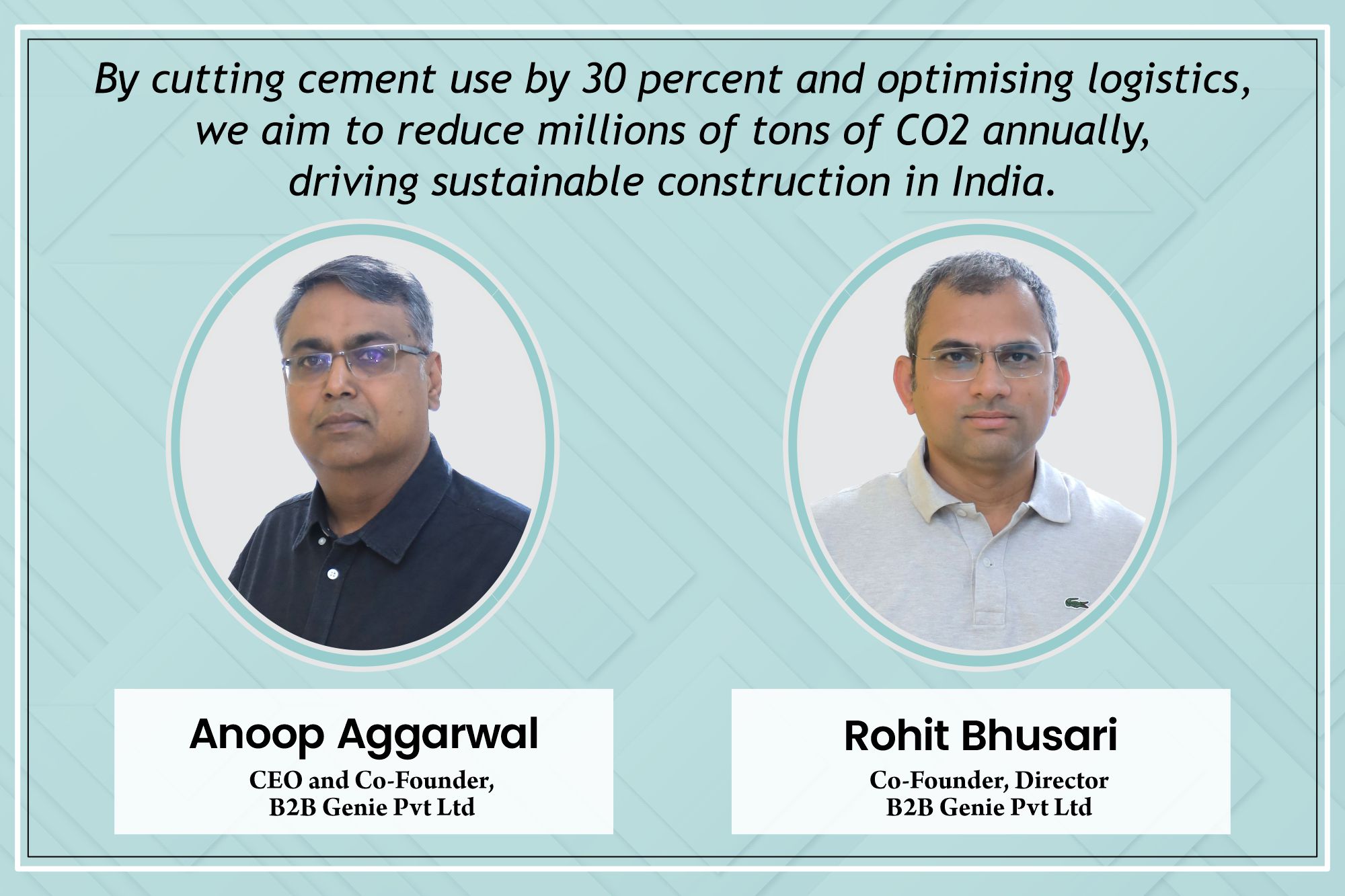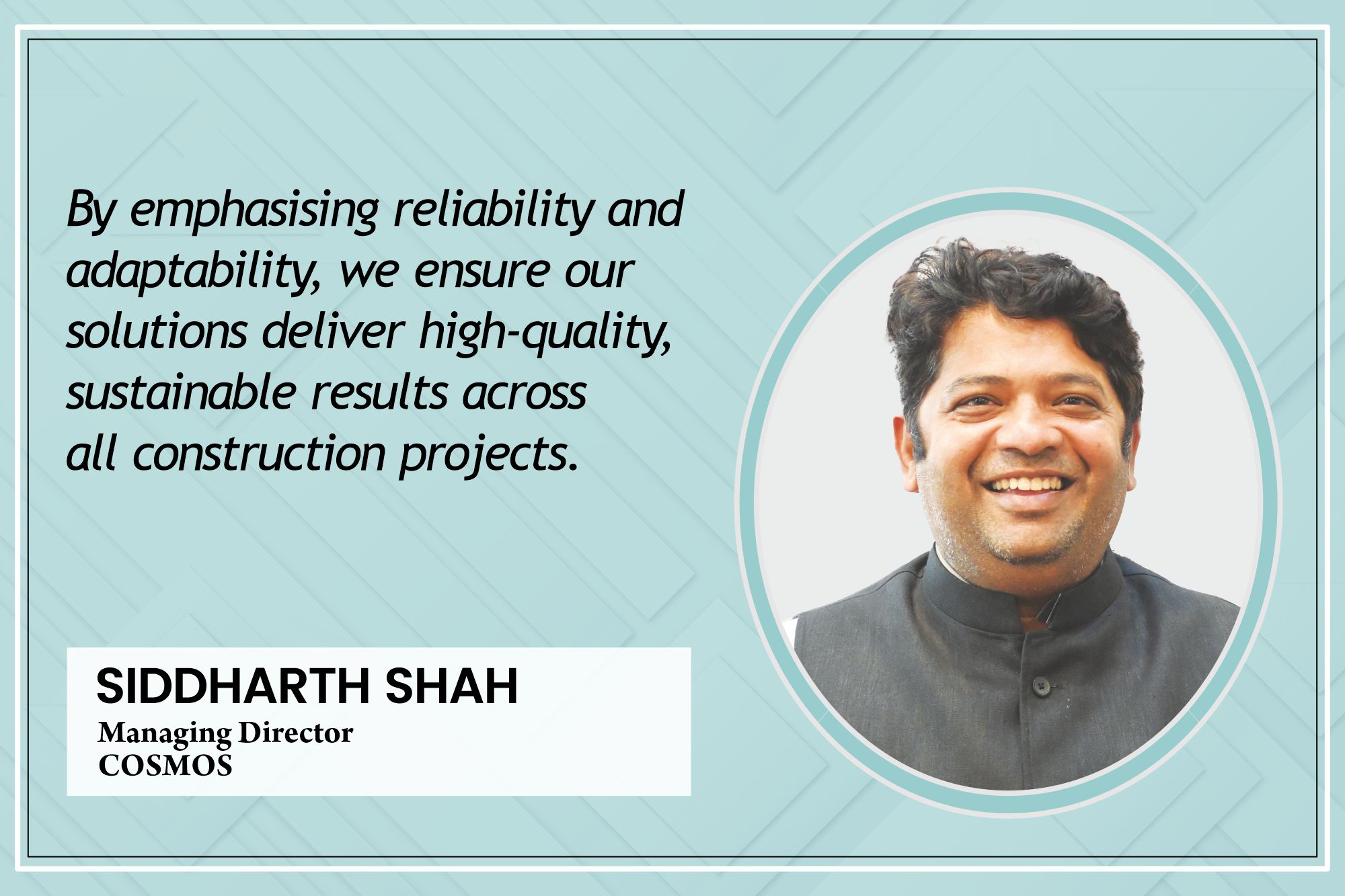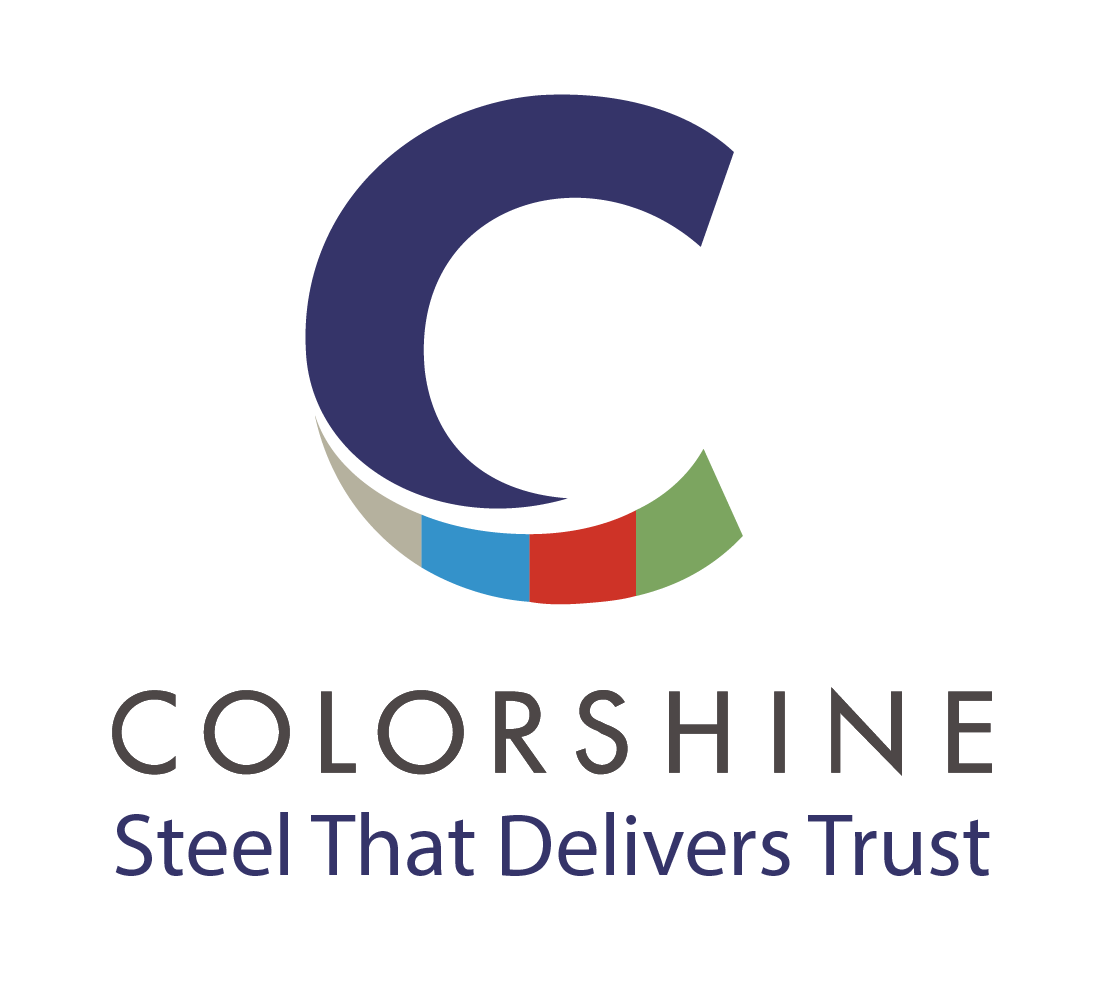How innovative technologies and durable materials are enhancing infrastructure resilience and sustainability
By Staff Report | October 23, 2024 5:09 pm SHARE
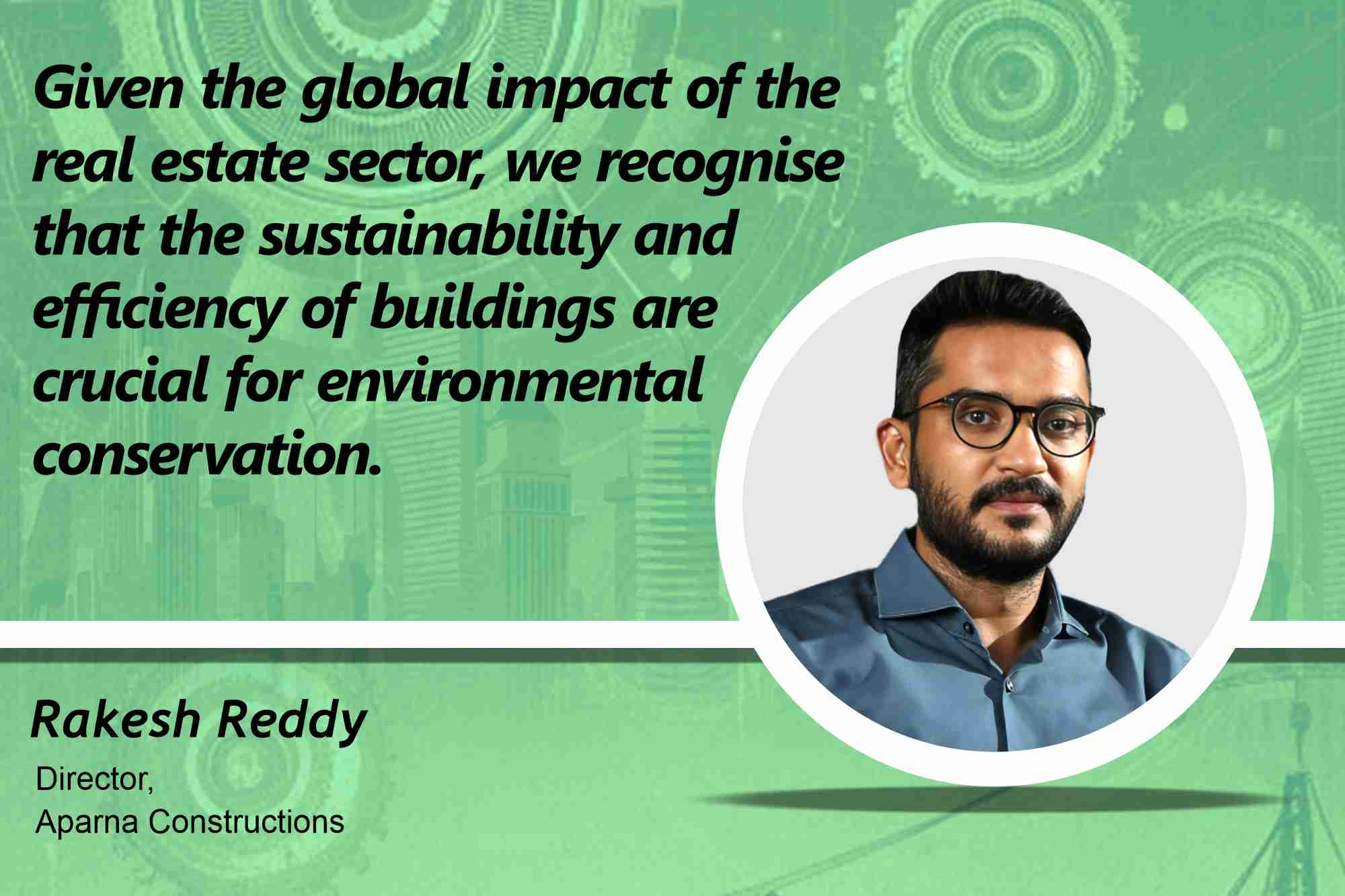
With a vision of sustainable luxury, Aparna Constructions is revolutionising the real estate sector by incorporating advanced technologies and eco-friendly practices that elevate the quality of living while safeguarding our planet.
Could you explain how Aparna integrates eco-friendly practices into its residential and commercial projects, especially in water conservation, energy efficiency, and waste management?
Aparna Constructions is at the forefront of using technology to enable sustainable construction practices in India. We adhere to international eco-friendly standards by the Indian Green Building Council (IGBC). We have multiple projects certified Platinum and Gold by IGBC. Incorporating eco-friendly and sustainable technology in building design has become increasingly prevalent in response to the growing trend of health and wellness-conscious homebuyers. Building layouts can be optimised using specialised modelling tools to promote maximum resident well-being through strategically designed lighting and ventilation. Additionally, using advanced analysis and design methodologies, combined with aerial footage of construction sites, enables the efficient construction of buildings with minimal environmental impact. This approach underscores a commitment to sustainable development and highlights the importance of balancing people’s and the planet’s needs.
Efforts are taken to make every project as energy efficient as possible – from the choice of the envelope materials to the design of the electrical layout and the choice of the star-rated electrical fittings. The choice of glass, as well as the insulation of the terrace with a low U-value material, reduces the heat transfer into the building by a great margin. Installing solar panels can save a considerable amount of energy costs every month. Switching from traditional light bulbs to LED and CFL and incorporating energy-efficient fixtures can help reduce electricity costs. Utilising natural lighting and solar energy systems also decreases carbon emissions from homes. Additionally, enhanced indoor air quality, improved ambience, and increased natural light have been shown to promote the health and well-being of residents.
At our project sites, we operate both sewage and water treatment plants. All treated water is reused in flush tanks and for landscaping purposes. On-site wastewater treatment and reuse significantly reduce the need for potable water, resulting in both cost savings and the preservation of natural resources. Solid waste is carefully segregated and responsibly disposed of. Stormwater runoff is collected in strategically placed rainwater harvesting pits, which helps replenish the local groundwater table. The collected rainwater is utilised for gardening, car cleaning, and other non-potable purposes, contributing to further cost savings and resource conservation.
Establishing a strong backend, IT infrastructure has significantly reduced paper usage while adopting an Enterprise Resource Planning (ERP) system helps prevent unplanned breakdowns. This optimises workflows, lowers maintenance lifecycle costs, and enhances labour productivity. Efficient resource planning lowers costs, increases property value, and reduces environmental impact.
How do you leverage advanced construction technology, such as automation, smart homes, or green building techniques, in your projects?
The overall goal of the real estate sector, in which technology now plays a vital role, is to improve the welfare of the residents and the locality. Digital transformation in the real estate sector has introduced advanced technology and expanded the entire lifecycle of business operations, including construction, procurement, and administration. Embracing technology is imperative to bolster the sector’s growth. This is a prime opportunity to reevaluate traditional industry practices and introduce new technologies like automation and artificial intelligence.
Integrating technology into real estate operations simplifies large-scale, complex processes and improves data management by delivering accurate, efficient, high-quality insights. This includes real-time data digitisation and the integration of physical operations through the Internet of Things (IoT). Additionally, using drone footage to monitor construction sites, along with advanced analysis and design techniques, enables the construction of more efficient buildings with minimal environmental impact.
Automation, artificial intelligence, and big data are being heavily employed in construction practices to increase efficiency and mitigate risk. These new technologies enable developers to streamline routine practices while minimising maintenance lifecycle costs and increasing labour productivity.
High-rise buildings demand more resources than smaller structures, with the structural component accounting for a significant portion of the overall cost. Consequently, selecting appropriate building materials and construction methods is essential for determining a building’s efficiency. To address this, we integrate technology throughout every project lifecycle stage— from design and construction to operation, maintenance, renovation, and eventual demolition. This approach reduces environmental impact and maximises value at each phase.

Our premium projects have smart home automation systems that use voice, smartphone, and physical commands. The smart home facilities include device connectivity, sensor feedback, and data analysis. Wireless functionality can be incorporated into nearly any electronic device, including appliances, window shades, thermostats, and lighting. A home automation system seamlessly integrates all electronics into a unified wireless network, requiring no complex programming or additional cabling.
Technology-driven projects can identify and resolve issues in real-time using sensor technology. Data can be gathered from maintenance systems such as the sewage treatment plant, water treatment plant, and rainwater harvesting system. By monitoring resource usage and waste, projects can continuously optimise their designs and operations, reducing costs while conserving natural resources.
Prefabrication and modular construction are gaining popularity because they reduce construction timelines. How has Aparna adopted modular construction techniques to improve efficiency and reduce waste in your projects?
As labour costs rise compared to material costs, we are exploring solutions that utilise prefabricated or manufactured structural components and building modules. In this context, Aparna Constructions became the first to introduce Mivan technology in Telangana. This cutting-edge aluminium wall formwork offers a modular alternative to traditional construction methods, providing significant benefits in terms of quality, speed, and reduced need for skilled labour. The system is designed with load-bearing walls and slabs for enhanced structural efficiency. The entire assembly is subsequently shuttered and poured monolithically, offering a considerable advantage in structural stability. Mivan technology offers numerous benefits, including accelerated construction and completion due to the lightweight aluminium formwork, consistent construction quality, and minimal waste. Additionally, Mivan technology guarantees uniformity in apartment sizes across all blocks. Furthermore, its speed and efficiency ensure that the surrounding area remains undisturbed during construction.
Affordable housing projects are well-suited for Mivan technology. This method allows for the rapid construction of numerous homes by using room-sized forms to create walls and slabs in a single continuous pour of concrete. It is highly cost-effective for similar building layouts and plinth work. This unique system utilises concrete for all building components, including slabs, beams, walls, columns, staircases, and balconies, eliminating the need for costly and labour-intensive block or brickwork.
Mivan technology enhances efficiency and significantly reduces the skilled labour required to construct the building’s shell and core, substantially decreasing overall project costs. However, large-scale projects featuring similar layouts best achieve these cost-saving advantages.
What emerging construction technologies have you adopted in your recent projects to enhance efficiency, safety, and precision?
The need for increased efficiency and digital transformation within the real estate industry cannot be overlooked. Fostering continued growth within the industry requires reassessing existing practices and implementing new systems, including cutting-edge technologies such as AI and Data Analytics.
At our project sites, we gather comprehensive visual data that is cross-referenced with Building Information Modelling information so that project managers can effortlessly monitor progress and identify potential quality issues at the onset of the construction process. Proactive monitoring of the worksite combined with analytical tools can also predict and highlight potential safety risks.
We employ technology for numerous health and safety functionalities, including autonomous operations, real-time location tracking, predictive maintenance capabilities, and detailed fuel and battery consumption analytics. By integrating IoT devices and tags, we proactively anticipate potential equipment breakdowns, resulting in substantial cost savings and enhanced operational efficiency.
Once completed, our projects prioritise the health, safety, durability, liveability, and accessibility of all residents. They are designed to promote wellness and foster a holistic environment, which reduces stress and enhances productivity. The decreased consumption of water and energy, improved air quality, incorporation of natural light, and reduced CO2 emissions significantly contribute to residents’ overall health and well-being. Integrating sustainable features, such as solar panels, rainwater harvesting, waste management systems, and energy-efficient lighting, further enhances the quality of life.
Incorporating big data tools into the real estate sector helps simplify complex, large-scale operations and streamline data management with greater accuracy and efficiency. We utilise big data analysis for capital planning, cost control, and real estate management. This data provides insights that inform governance throughout all project phases—from planning and construction to operations and maintenance. Big data tools facilitate the efficient aggregation and analysis of incoming information, creating a transparent system that swiftly identifies cost savings and opportunities. We aim to consistently deliver high-quality, relevant information and insights to improve real-time project operations and maintenance management.
For more information, visit: https://www.aparnaconstructions.com/
Cookie Consent
We use cookies to personalize your experience. By continuing to visit this website you agree to our Terms & Conditions, Privacy Policy and Cookie Policy.




